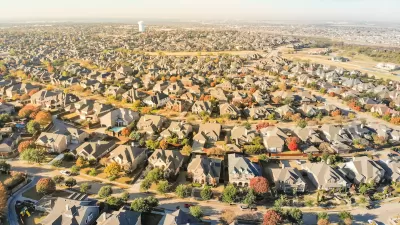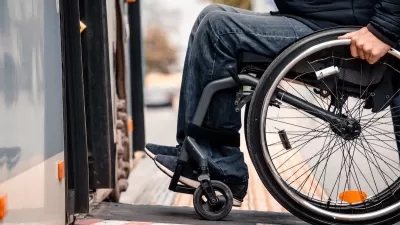I’m going to riff off a recent Interchange Blog post by Michael Lewyn on the relationship between mobility and accessibility. Given the positive comments from the planning community to Michael’s post, a little engagement may be necessary for both clarity as well as fully understanding the implications of reading too much into the accessibility versus mobility debate.
I'm going to riff off a recent Interchange Blog post by Michael Lewyn on the relationship between mobility and accessibility. Given the positive comments from the planning community to Michael's post, a little engagement may be necessary for both clarity as well as fully understanding the implications of reading too much into the accessibility versus mobility debate.
Michael makes a welcome attempt to clarify the distinction between the two terms, but I think he's incorrect when he concludes his post, after criticizing planning in "auto-dependent" suburbs: "It logically follows that mobility for all is highest in places that accommodate pedestrians, transit users, and bicyclists as well as drivers- in other words, that accessibility is mobility." As the author of two books on transportation policy, and one titled Mobility First, I'll beg to dissent-somewhat.
For the record, I agree completely with the observation that the terms "mobility" and "accessibility" are confused in the planning discourse, with the term mobility often incorrectly tied to automobile travel as if mobility should be dismissed or reduced. This is unfortunate.
Mobility, as Michael correctly notes, is about moving people and goods from place-to-place. Higher mobility is good for society and cities (as I discuss in Chapter 3 of Mobility First.) Accessibility is something that is easily approached, entered, obtainable, or attained. Greater accessibility is also good for society and cities. Achieving one doesn't necessarily imply giving up the other. The two terms should not be conflated, in either common usage or in urban planning discourse. Mobility provides access, but it is not access. Also, accessibility does not provide mobility.
The automobile, in contrast, is a transportation technology, a method for obtaining things people desire. Cars are, in this respect, no different from busses, taxis, bicycles, or even our feet in the context of mobility (and more broadly accessibility). Each of these technologies has functional advantages and disadvantages. The choice, and even preference for, one transportation technology over another is driven by the desire for mobility and its ability to provide as a means for accessing the goods and services we want.
Unfortunately, by conflating mobility, accessibility and transportation modes, we leave out the crucial discussion of the trade offs implied by consciously shifting from one transportation mode to another. Simply adding transportation modes to an existing built environment will not necessarily increase mobility or accessibility. If the buses run empty, and bicycle paths go unused, the provision of these alternative modes provides neither greater mobility nor greater access. Indeed, by shifting resources from more productive public investments, including greater capacity for the modes that make sense, overall accessibility may decline.
Thus, in the ongoing discussion in the planning profession about mobility and accessibility, a crucial question is what transportation modes need to be in what places and at what times in the neighborhood development cycle. Not all modes are created, or function, equally. Putting the wrong modes in the wrong place may compromise the healthy development of communities.

Alabama: Trump Terminates Settlements for Black Communities Harmed By Raw Sewage
Trump deemed the landmark civil rights agreement “illegal DEI and environmental justice policy.”

Study: Maui’s Plan to Convert Vacation Rentals to Long-Term Housing Could Cause Nearly $1 Billion Economic Loss
The plan would reduce visitor accommodation by 25% resulting in 1,900 jobs lost.

Planetizen Federal Action Tracker
A weekly monitor of how Trump’s orders and actions are impacting planners and planning in America.

Wind Energy on the Rise Despite Federal Policy Reversal
The Trump administration is revoking federal support for renewable energy, but demand for new projects continues unabated.

Passengers Flock to Caltrain After Electrification
The new electric trains are running faster and more reliably, leading to strong ridership growth on the Bay Area rail system.

Texas Churches Rally Behind ‘Yes in God’s Back Yard’ Legislation
Religious leaders want the state to reduce zoning regulations to streamline leasing church-owned land to housing developers.
Urban Design for Planners 1: Software Tools
This six-course series explores essential urban design concepts using open source software and equips planners with the tools they need to participate fully in the urban design process.
Planning for Universal Design
Learn the tools for implementing Universal Design in planning regulations.
Caltrans
Smith Gee Studio
Institute for Housing and Urban Development Studies (IHS)
City of Grandview
Harvard GSD Executive Education
Toledo-Lucas County Plan Commissions
Salt Lake City
NYU Wagner Graduate School of Public Service






























